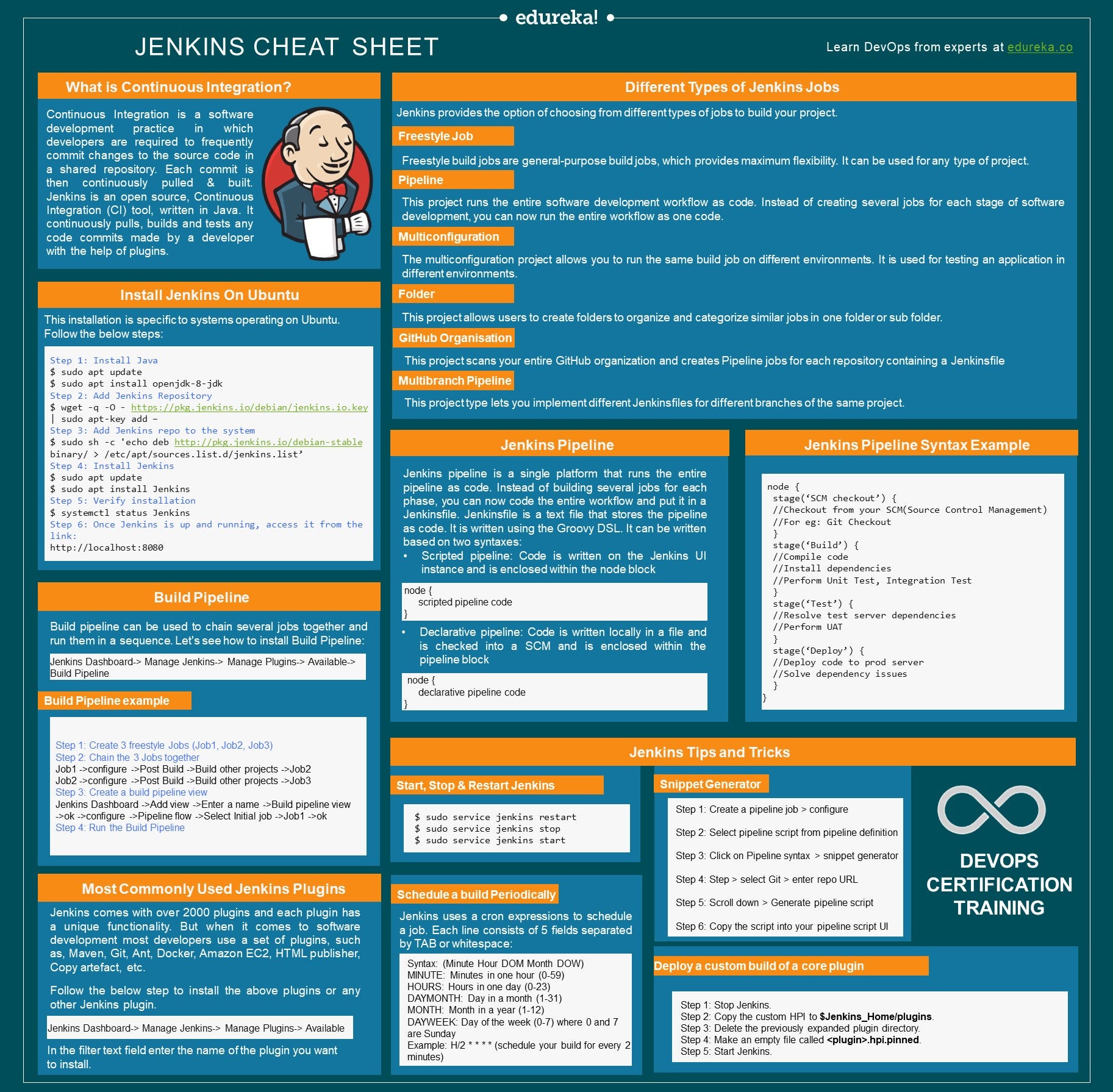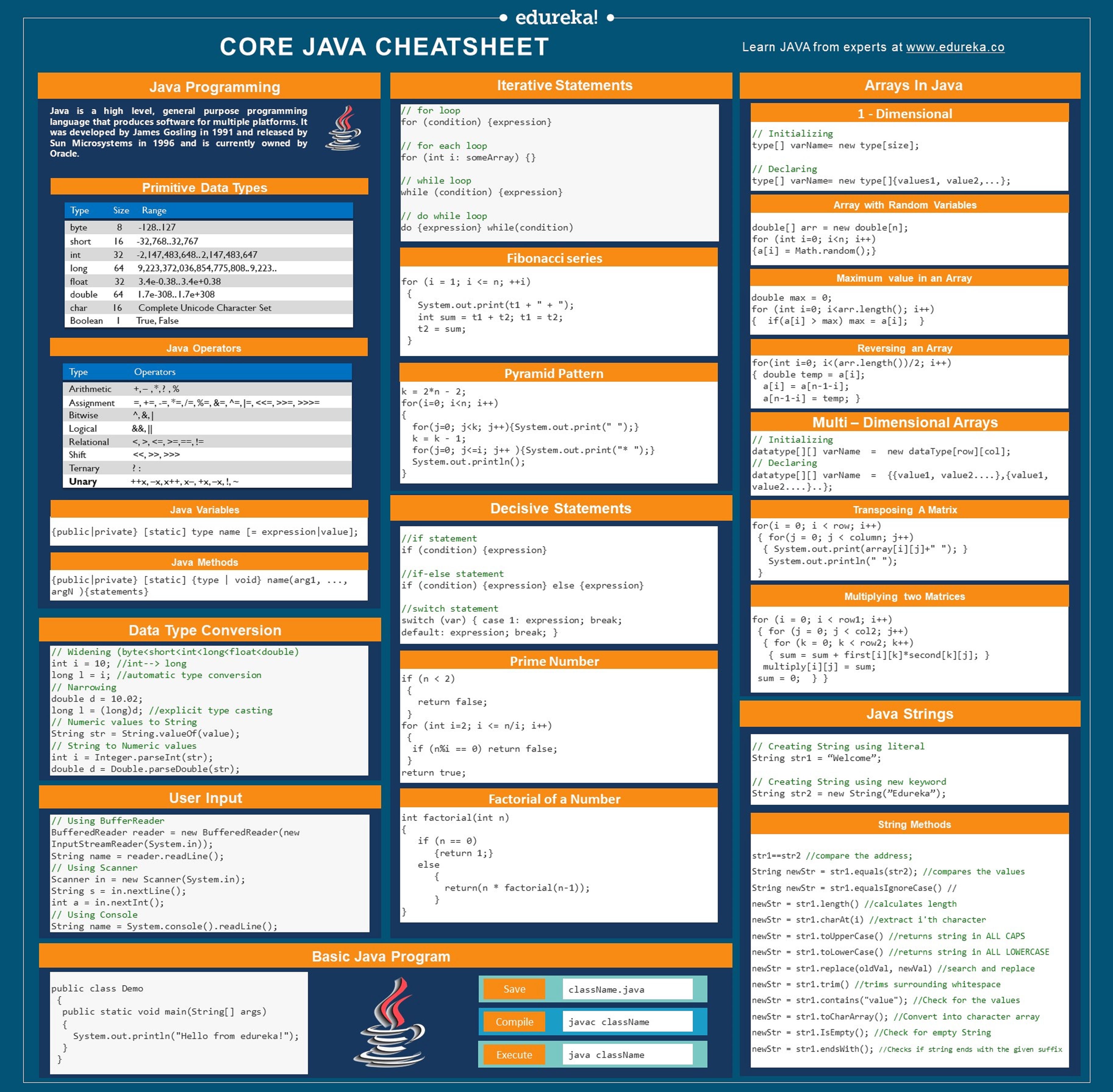- View Jenkins-Cheat-Sheet.pdf from INFORMATIO ICT123 at University of Sargodha, Sargodha. JENKINS CHEAT SHEET Jenkins Jenkins is a software which allows you to do the continuous integration on your.
- Read writing about Jenkins Cheat Sheet in Edureka. There are many e-learning platforms on the internet & then there’s us. We are not the biggest, but we are the fastest growing.
(from Understanding Nginx Server and Location Block Selection Algorithms - https://goo.gl/YyzshP)
GIT CHEAT SHEET STAGE & SNAPSHOT Working with snapshots and the Git staging area git status show modified files in working directory, staged for your next commit git add file add a file as it looks now to your next commit (stage) git reset file unstage a file while retaining the changes in working directory git diff. Groovy/Scripted cheat sheet? Posted by 1 day ago. I set up Jenkins in docker and a few additional containers which have our build environment set up and a few machines that can handle all of our build needs. I then built a declarative pipeline which can (with a change in parameters) build any of the streams that I point it at.
Blocks: server
JENKINS CHEAT SHEET Jenkins is a software which allows you to do the continuous integration on your application/software lifecycle. It gets installed on the server where the central build will take place. Now lets understand its workflow. J e n k i n s FURTHERMORE: JenkinsTraining Commands in Jenkins: (URLs).
Priority
- listen
- server_name
Directives: listen
The listen directive can be set to:
- An IP address/port combo.
- A lone IP address which will then listen on the default port 80.
- A lone port which will listen to every interface on that port.
- The path to a Unix socket.
Jenkins Cheat Sheet Medium
When 'incomplete' listen directives
- A block with no listen directive uses the value 0.0.0.0:80.
- A block set to an IP address 111.111.111.111 with no port becomes 111.111.111.111:80
- A block set to port 8888 with no IP address becomes 0.0.0.0:8888

Devops Cheat Sheet Pdf
Options: default_server
Directives: server_name
Nginx evaluates these by using the following formula:

- Nginx will first try to find a server block with a server_name that matches the value in the 'Host' header of the request exactly.
- Find a server block with a server_name that matches using a leading wildcard (indicated by a * at the beginning of the name in the config).
- If no match is found using a leading wildcard, Nginx then looks for a server block with a server_name that matches using a trailing wildcard (indicated by a server name ending with a * in the config).
- If no match is found using a trailing wildcard, Nginx then evaluates server blocks that define the server_name using regular expressions (indicated by a ~ before the name).
- If no regular expression match is found, Nginx then selects the default server block for that IP address and port.
Blocks: location
Options: optional_modifier
- (none): The location is interpreted as a prefix match. This means that the location given will be matched against the beginning of the request URI to determine a match.
- =: This block will be considered a match if the request URI exactly matches the location given.
- ~: This location will be interpreted as a case-sensitive regular expression match.
- ~*: The location block will be interpreted as a case-insensitive regular expression match.
- ^~: If this block is selected as the best non-regular expression match, regular expression matching will not take place.
Directives: index
Directives: try_files
If a request is made for /blahblah, the first location will initially get the request. It will try to find a file called blahblah in /var/www/main directory. If it cannot find one, it will follow up by searching for a file called blahblah.html.
Directives: rewrite
A request for /rewriteme/hello will be handled initially by the first location block. It will be rewritten to /hello and a location will be searched.
Directives: error_page
Examples
A simple PHP site configuration
App server (Redmine)
App server (Jenkins)
An MSBuild Cheatsheet of handy references I’ve used for automating with MSBuild.
Reference Paths
Specify the path(s) to Project Reference DLLs. The ReferencePath property allows you to add a series of paths that MSBUILD will check, overriding any project-based references.
Build Output Location
To change where MSBuild puts the build output. You can use a relative path or full path.
Using Quotes
In MSBuild scripts, to use quotes in commands use the " characters.

Build Configuration
Specify the build configuration and platform.
Copying Files

To Copy files to your output location using the Copy task with an Item.
Case is Important
When creating MSBuild Scripts, the casing of the XML nodes and attributes matters. Using lower case on attributes could result in an MSBuild error indicating the attribute is unknown.
<Target name=”Default”>
is not the same as
<Target Name=”Default”>
If your case is wrong you’ll get an error like: MSB4066: The attribute “name” in element is unrecognized.
MSB4064
MSB4064: The “Retries” parameter is not supported by the “Copy” task. This error usually means you’re targetting v10.0 of MSBuild but you only have v9.00 installed. Use the IsDesktopBuild condition to use v9.0 when not in Visual Studio.
References
